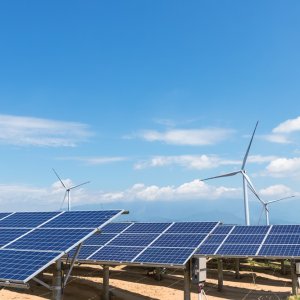Mexico Has Strong Hydropower Potential for Energy Transition

STORY INLINE POST
Q: How did CIPRO establish itself as a global leader in water-based infrastructure beyond its hydropower know-how?
A: In addition to our vast experience in hydroelectric power generation, we also have business lines specialized in urban water infrastructure, which currently represents 70 percent of our portfolio. Due to accelerated urban growth, constant investment is required toward the expansion and maintenance of drainage, sanitation and water purification infrastructure. CIPRO collaborates with cities to design their water management systems at high international standards of efficiency in both water and energy management. In addition, we offer specialized services related to water adequacy and sanitation. We also offer water management services for the industrial sector, where we offer drinking water treatment, desalination and purification plants, among others. We help industries obtain the quality water they require for their operations.
Q: What potential does Mexico hold for hydropower-based electricity generation?
A: There was a time when Mexico had large hydroelectric projects, leading Mexican engineers and companies to go to Central and South America to carry out major hydro projects in these regions. For many years, Mexico was the leader in Latin American waterfall-based hydropower.
Today, the panorama has changed. The large environmental impact and the required displacement of local populations for the construction of large dams have slowed the development of new large-scale hydroelectric power projects. Mexican law stipulates that communities affected by hydroelectric projects must be consulted to obtain construction approval. The current trend is toward small and medium-sized hydroelectric projects that have less of an impact on the population. These projects, which generate electricity by diverting rivers and then returning them to the source, have a great future in Mexico. It should be noted that hydroelectric plants do not consume water. Rather, they take water from one point, generate energy through movement and then deposit the water back into the river.
Q: How has the government's policy to revamp older hydro dams boosted the hydroelectricity segment?
A: The hydro plants that are being refurbished were built between the late 1960s and early 2000s. During their construction, these plants were equipped with the most advanced technology and the best facilities available. Over time, technology has created turbines capable of producing more electricity with the same speed and volume of water. The plan to improve the efficiency of hydroelectric plants implemented by the federal government seeks to increase the efficiency of plants in operation by refurbishing their equipment. This will allow them to generate more electricity with the same input. The investment benefits our current energy matrix because we need to generate more energy to boost economic growth.
Q: Why should Mexico continue to invest in hydropower as part of the energy transition?
A: Mexico is a privileged country, as we are among the nations with the greatest resources for renewable energy generation. Investment to move toward clean power production should depend on the region. For example, in the south and southeast of the country, as well as along the coast of the Gulf of Mexico, Mexico can use water to generate electricity. The technology for hydroelectricity is stable, widely available and a proven method that produces the expected amount of energy. Investment to further hydropower development makes a great deal of sense.
The Baja California peninsula, Sonora, Sinaloa, Chihuahua, Durango and Coahuila have some of the best solar radiation in the world, which would allow them to generate photovoltaic and thermal solar energy with remarkable efficiency. In addition, the rest of the country also has solar capacity for wide implementation of distributed generation (DG). The same happens with wind energy. Regions such as the Isthmus of Tehuantepec in Oaxaca, the Baja California peninsula, Zacatecas, San Luis Potosi and Yucatan have optimal conditions for Mexico to consolidate as a power in wind generation. The long-term objective is for national electricity generation to rely on clean sources. Mexico must take advantage of its potential to consolidate a diversified matrix, based on renewable energy, that will provide reliability to the grid and ensure there is enough cost-effective power to boost economic development.
Q: What risks do droughts represent for hydropower generation?
A: During a drought, there is undoubtedly less water available; however, we must consider that Mexico is a country with strong climate differences between its regions. At the moment, the northern part of the country is suffering from a major drought. Meanwhile, Chiapas and Nayarit, states where several hydroelectric plants are located, have not had any droughts at all. As such, hydroelectric plants do not stop generating energy when the dry season begins but instead produce less energy due to lower water levels. The risk of droughts will always be latent. This is one of the reasons why it is important to consolidate a diversified energy mix.
Q: How has the roadmap for CIPRO's expansion into foreign markets advanced?
A: In 2016, CIPRO developed a strategic growth plan, in which it set the goal of consolidating itself as one of the Top Mexican companies for engineering and construction supervision in the water and energy sectors. Once we consolidated our position, the next step in our growth was to replicate that success in new markets. Therefore, we explored markets in Central America, South America and the Caribbean, mainly the Dominican Republic, concerning the latter.
Our operational expansion began in 2018, with our first project abroad, which was a value engineering project for a purifying plant in David, Panama. Subsequently, in 2019, we won the construction´s supervision project for La Manija, an aqueduct matrix in Bogota, Colombia. This allowed us to strengthen our presence there. For CIPRO, the first project is always a fundamental step because it is the key to entering any country. We implement models of excellence that allow us to consolidate our presence in new markets from the very beginning.
CIPRO is a Mexican water infrastructure company specialized in hydraulic, mechanical, electrical, geotechnical, structural, topographical and architectural engineering. The company also specializes in hydropower.








 By María José Goytia | Journalist and Industry Analyst -
Thu, 06/02/2022 - 08:54
By María José Goytia | Journalist and Industry Analyst -
Thu, 06/02/2022 - 08:54
















